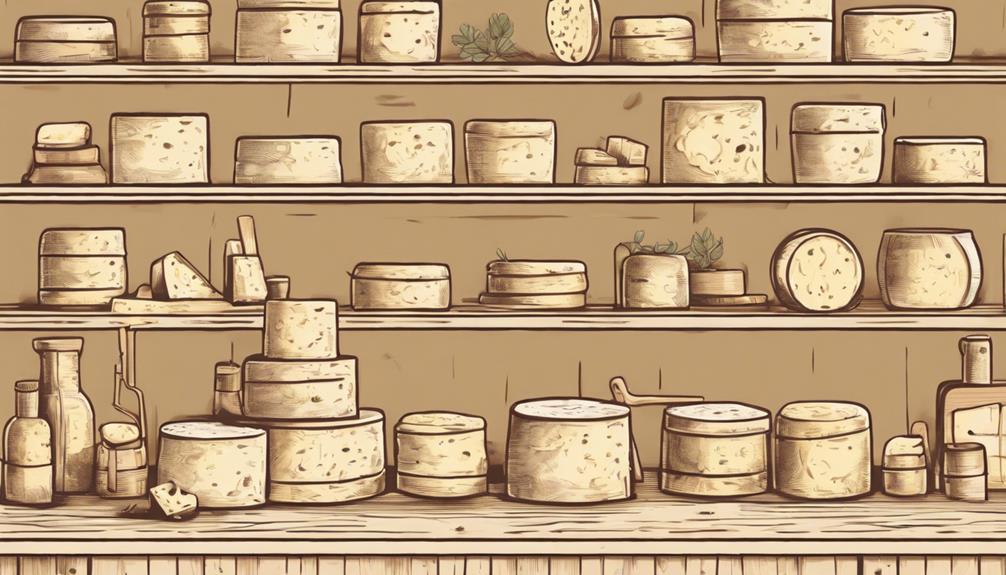How To Become More Self-Sufficient Without Starting a Full-Blown Farm…
Want to start preserving your harvest, making your own soap, or building a backyard root cellar — but not sure where to begin? “Homesteading Advice” gives you instant lifetime access to 35+ practical homesteading books on food preservation, veggie gardening, DIY natural cleaning products (save over $250 per year with this skill alone), brewing, off-grid energy, and a whole lot more…
Click Here To Check It Out Now!
“I’ve recently started making cheese at home, and I’m struggling with how to properly store my cheese molds to keep them in good shape. I want to make sure I’m not missing any important steps that could affect the quality of my molds and ultimately my cheese. Could you provide some detailed advice on the best practices for storing cheese molds?” Thanks, Rachel, Portland, USA.
What Are The Best Practices For Storing Cheese Molds?
Rachel, it’s fantastic that you’re diving into the art of cheese making! Keeping your cheese molds in top-notch condition is key to producing high-quality cheese. Let’s chat about the best ways to store your molds so they stay in perfect shape.
Cleaning Your Cheese Molds
Before storing, it’s crucial to ensure your cheese molds are thoroughly cleaned. Residual cheese and whey can promote the growth of bacteria or mold, which can contaminate future batches. Here’s a step-by-step guide on cleaning your molds:
- Rinse Immediately: After using, rinse your molds with warm water to remove any cheese residues.
- Hand Wash: Use a non-abrasive brush and mild dish soap. Avoid harsh chemicals that could damage the mold material. Ensure that all crevices are thoroughly cleaned.
- Sanitize: Submerge the molds in a solution of 1 part white vinegar to 5 parts water or use a food-safe sanitizer solution. This helps eliminate any lingering bacteria.
- Rinse Again: Rinse well with clean water to ensure no soap or vinegar remains.
- Dry Completely: Allow the molds to air dry fully. Any moisture left can lead to mold growth during storage.
Proper Drying Techniques
Drying is an essential step before storing your molds. Here are some tips to ensure they dry properly:
- Air Dry: Place molds in a well-ventilated area to air dry. Using a drying rack can help speed up the process.
- Avoid Direct Sunlight: While sunlight can speed up drying, prolonged exposure can degrade some materials.
- Check For Residual Moisture: Before storing, double-check all crevices and nooks for residual moisture. Use a dry, clean cloth to wipe down if necessary.
Storing Molds to Prevent Damage
Once your molds are clean and dry, proper storage is next. Here’s how you can keep your cheese molds in pristine condition:
Storage Environment
Choose the right environment for storing your molds:
- Temperature Control: Store molds in a cool, dry place. Excessive heat can warp molds, while humidity can lead to mold growth.
- Avoid Light Exposure: Prolonged exposure to light can weaken some plastics and cause discoloration.
- Avoid High Traffic Areas: This prevents accidental damage from frequent movement or falling objects.
Organizing Your Molds
Organizing helps protect your molds and keeps them easily accessible:
- Separate Types: If you have multiple types of molds (e.g., different shapes or sizes), consider organizing them in separate bins or shelves.
- Label Containers: Clearly label storage containers to make it easy to find the right mold when you need it.
- Stack Carefully: If stacking is necessary, place heavier molds on the bottom and lighter ones on top to avoid crushing.
Material-Specific Storage Tips
Different materials require slightly varied storage approaches, Rachel. Here’s a quick rundown:
Plastic Molds
- Avoid Overcrowding: Plastic molds can warp if stored poorly. Provide enough space to avoid pressure points.
- Support Structures: Use supports or dividers to maintain shape.
Metal Molds
- Prevent Rust: Ensure metal molds are completely dry before storage. Consider adding silica gel packets to absorb any residual moisture.
- Padding: Use padding like cloth or paper towels between molds to prevent scratching.
Wooden Molds
- Climate Control: Wood is sensitive to humidity and temperature changes. Store in a stable environment to avoid warping or cracking.
- Periodic Oil Treatment: Treat wooden molds with food-grade mineral oil occasionally to maintain moisture balance and prevent cracks.
Long-Term vs. Short-Term Storage
Depending on how often you make cheese, Rachel, your storage approach might differ:
Short-Term Storage
If you use your molds frequently, consider keeping them easily accessible. Here are some tips:
- Open Shelving: Store molds on open shelves for easy access while keeping them ventilated.
- Quick Sanitation Station: Have a designated area for quick cleaning and drying between uses.
Long-Term Storage
For less frequent use, more protective measures are needed:
- Sealed Containers: Store molds in airtight containers to protect from dust and pests.
- Climate-Controlled Areas: Consider storing in a basement or pantry where temperature and humidity can be maintained more consistently.
Additional Tips and Considerations
Before wrapping up, here are a few extra pointers to keep in mind:
- Regular Inspections: Periodically check your stored molds for any signs of damage or mold growth. Early detection helps prevent larger issues.
- Rotate Stock: If you have multiple molds, rotate their use to ensure even wear and maintain their integrity.
- Document Storage Environment: Keep a record of storage conditions, especially for valuable or rare molds, to identify any potential issues early on.
Why Proper Storage Matters
Proper storage isn’t just about neatness—it’s about preserving the quality and lifespan of your molds. Well-maintained molds produce more consistent and higher quality cheeses. By safeguarding your molds against damage and contamination, you’re directly supporting the integrity of your cheese-making endeavors.
Final Thoughts…
Rachel, I’m delighted you reached out with this question. Caring for your cheese molds with the practices outlined will not only extend their lifespan but also ensure that your cheeses remain consistently delicious and safe. Thank you for sharing your concern—it helps keep this wonderful art vibrant and growing.

